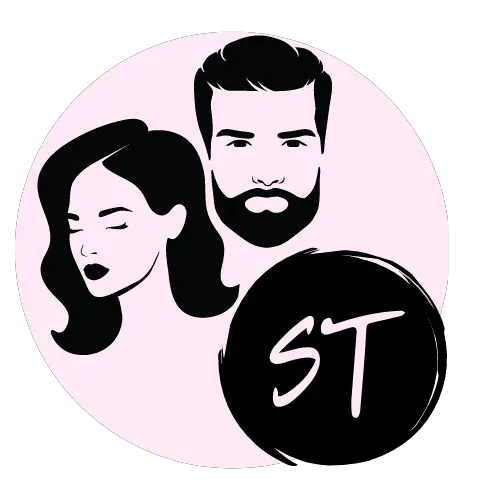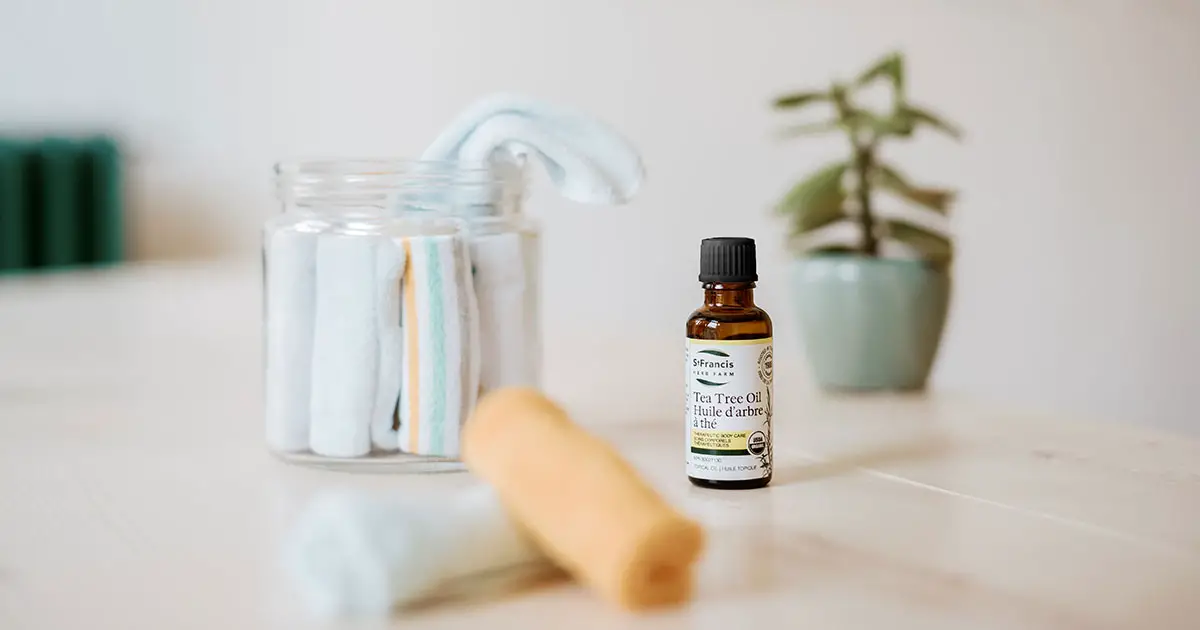I’m Amelia. I have been working with hair care product shampoo and conditioner for 6 long years. This website is an outlet of my deep...Read more
Head lice are a frustrating problem, especially for children. Fortunately, there are natural medicines that can help prevent and remove lice. One such famous remedy is tea tree oil.
In this blog, we will discuss how to use tea tree oil to prevent head lice and what advantages it has, and we will also explore other essential oils, besides the already mentioned tea tree oil.
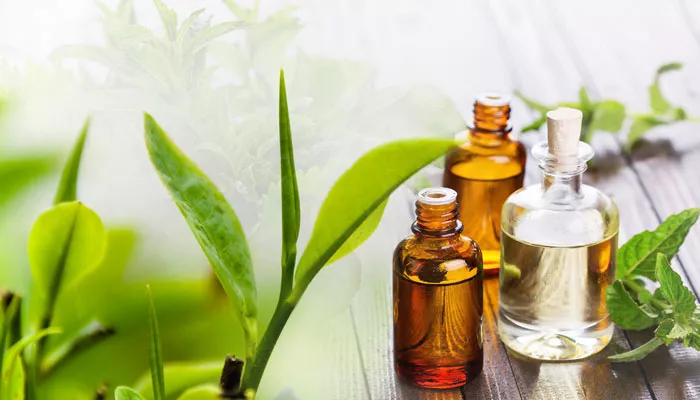
Table of Contents
What are lice?
Lice are small parasitic tiny insects that feed on human blood and infest the scalp, body, and pubic hair. They are highly contagious and can spread easily through direct contact with an infected person, sharing personal items like combs, brushes, hats, clothing, or even bedding.
- Head lice can cause intense itching, which is a common symptom of infestation. The itching occurs due to the lice saliva, which contains an anticoagulant that prevents blood from clotting and facilitates their feeding. The itching can lead to excoriation of the scalp, causing pain and discomfort.
- Children, in particular, may experience severe itching and irritation, and they may scratch their scalp excessively, leading to secondary bacterial infections. Additionally, head lice can cause social stigma and embarrassment, which can be especially challenging for children who are already vulnerable to peer pressure and bullying.
Therefore, it is crucial to identify and treat head lice promptly to prevent the spread of the infestation and minimize the discomfort and pain associated with it.
How do you get them?
- Head lice are spread primarily through direct head-to-head contact with an infected person. When two individuals come in close contact, the head lice can crawl from one person’s hair to the other’s.
- Lice can also spread through sharing of personal items such as combs, brushes, hats, scarves, hair accessories, and even headphones. Body lice can spread through contact with infested clothing, bedding, or towels. Pubic lice can be transmitted through sexual contact or through sharing personal items such as clothing or bedding.
How to check for lice in hair?
If you suspect that you or your child has lice, the first step is to check the hair for live lice and their eggs, also known as nits.
This can be done using a fine-toothed comb, or by carefully inspecting the hair and scalp for signs of lice.
To check for lice using a comb, follow these steps:
- Wash the hair with shampoo and conditioner, but do not apply any hair products.
- Use a fine-toothed comb to comb through the hair, starting at the scalp and working your way down to the ends.
- Wipe the comb on a paper towel after each stroke to check for lice or nits.
- Repeat the process for all sections of the hair shaft, including the nape and behind the ears.
If you find live lice or nits, it is important to act right away to prevent head lice infestations from spreading.
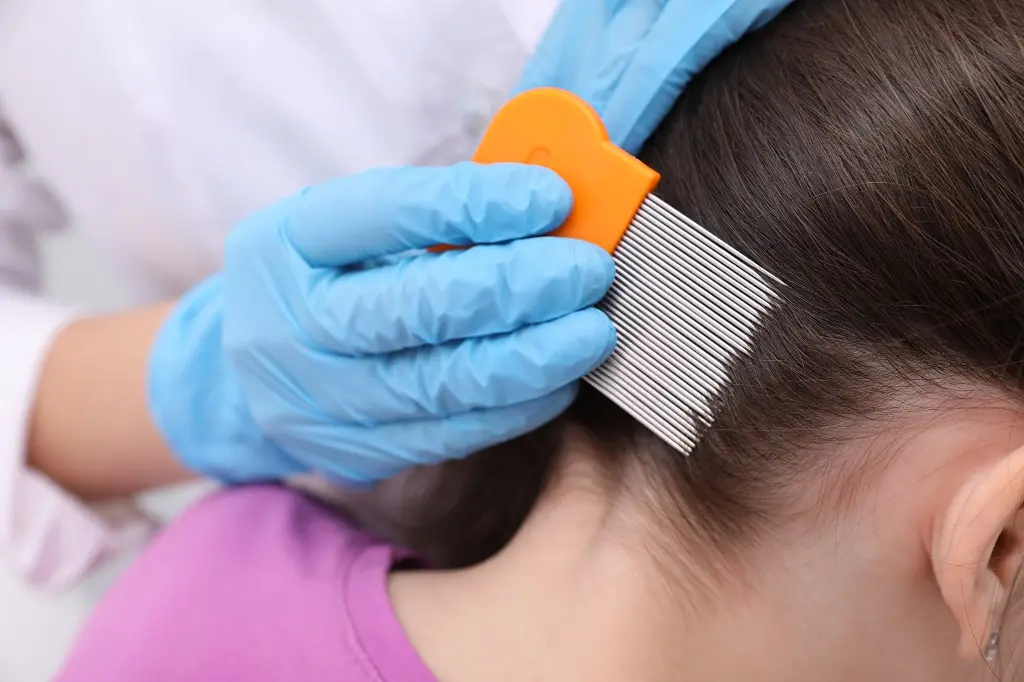
What to do if I have lice in my hair?
Natural treatment vs. botanical and synthetic substances
Why is it significant to use natural treatments such as tea tree oil for killing head lice in hairs rather than botanical and synthetic substances?
There are several reasons why using natural treatments such as tea tree oil to remove lice in hair is preferred over mentioned substances.
- Firstly, natural treatments are generally safer and gentler on the scalp and hair than chemical treatments.
- Synthetic substances commonly used in over-the-counter lice treatments often contain harsh chemicals that can be harmful to the skin, eyes, and respiratory system.
- Furthermore, chemical treatments can also strip the hair of its natural oils, leaving it dry and brittle.
- Secondly, natural treatments such as tea tree oil are more environmentally friendly than botanical substances.
- Botanical substances are frequently made from non-renewable resources and can have harmful effects on the environment when they are disposed of.
- Moreover, natural treatments are less likely to lead to the development of resistant lice.
In summary, using natural treatments such as tea tree oil for killing head lice in hair is preferred over mentioned substances due to their safety, environmental impact, effectiveness, and availability.
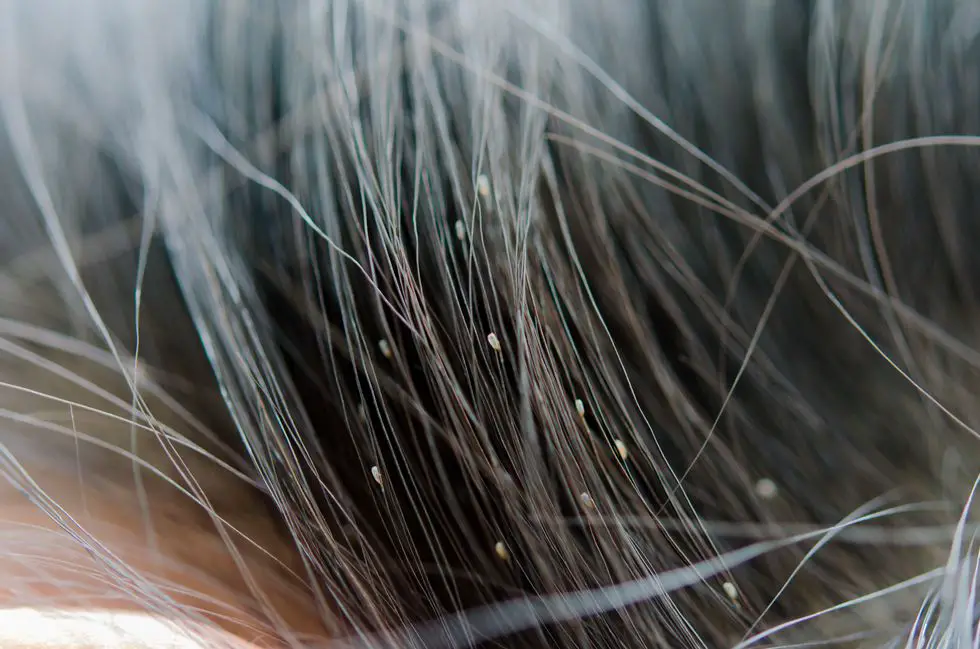
Tea tree oil treatments
There are several effective treatment options for head lice infestations. One natural remedy that has gained popularity in recent years is tea tree oil.
Tea tree essential oil possesses antimicrobial qualities against bacteria, fungi, and viruses.
Applying several drops of tea tree oil to the skin can help manage different skin issues, such as acne, dandruff, and lice.
The addition of drops of tea tree oil to shampoo can aid to kill lice and prevent their eggs from hatching. It can be used in many ways, such as pure tea tree oil shampoo or tea tree oil spray. Tea tree oil is a useful thing in trained hands, so here you will get knowledge of how to use tree oil for lice treatment.
To use tea tree oil for lice treatment, follow these steps:
- Purchase a bottle of pure tea tree oil.
- Add 10-20 drops of tea tree oil to 1 ounce of shampoo.
- The number of drops of tea tree oil you use will depend on the severity of the infestation and your hair type. For example, if you have sensitive skin or dry hair, you may want to use a lower concentration of tea tree oil.
- Mix the tea tree oil and shampoo well.
- Wash your hair with the tea tree oil shampoo, making sure to cover all areas of the scalp and hair.
- Leave the shampoo on your hair for at least 10 minutes to allow the tea tree oil to work its magic.
- Rinse your hair thoroughly with warm water.
- Comb your hair with a head lice comb to remove head lice or nits that are left.
- Repeat the tea tree oil treatment every 3-4 days for two weeks to ensure that all the lice and nits have been eliminated.
Tea tree oil has unique properties that make it different from other good essential oils used for removing lice. Tea tree oil contains terpinen-4-ol, a compound that has insecticidal and anti-inflammatory effects. This makes tea tree oil effective in not only killing lice but also reducing inflammation and irritation on the scalp.
Furthermore, tea tree oil is a natural remedy, meaning it is free of harsh chemicals commonly found in over-the-counter lice treatments. It’s also easy to find and relatively inexpensive.
Tea tree oil is a natural and effective remedy for lice removal, with unique properties that set it apart from other essential oils. However, as with any essential oil, it’s important to dilute tea tree oil for lice properly. If you experience any adverse reactions, stop using the oil and seek advice from a healthcare professional.
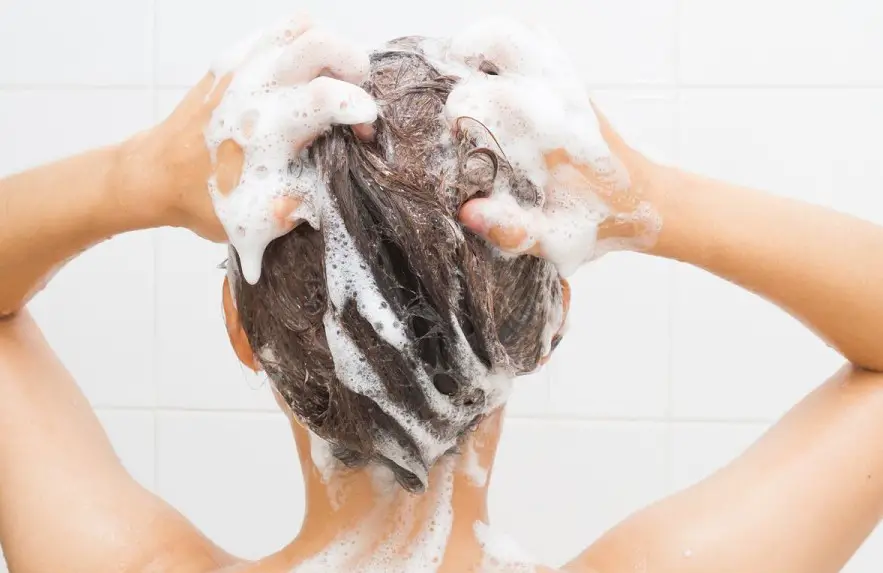
Lavender oil
Lavender oil has been used for various medicinal purposes, including removing lice. It is not as well known as tea tree oil, but it has its advantages compared to tea tree oil.
Lice are tiny parasitic insects that infest the hair and scalp and can cause severe itching and discomfort. Lavender oil, with its anti-inflammatory, antifungal, and insecticidal properties, has been proven to be an effective remedy for lice treatment. To use lavender oil for lice removal, follow these steps:
Dilute lavender oil with a carrier oil
Mix 10-12 drops of lavender oil with 2-3 tablespoons of carrier oil such as olive oil, coconut oil, or almond oil.
Apply the mixture to the hair and scalp
Using a cotton ball or your fingers, apply the mixture to your scalp and hair. Make sure you cover all the areas where lice are present.
Leave the mixture on your hair for at least 30 minutes
Cover your head with a shower cap or a towel to keep the mixture from dripping.
Comb out the lice and nits
After 30 minutes, use a toothed comb to comb out the lice and nits from your hair. Start at the scalp and work your way down to the ends of your hair.
Rinse your hair
Wash your hair thoroughly with warm water and a mild shampoo to remove the lavender essential oil combination and any dead lice or nits.
Repeat the treatment
Repeat the treatment every day for at least a week to ensure that all lice and nits are eliminated.
Lavender essential oil is a safe and natural alternative to chemical treatments for lice.
However, it is important to note that some people may be allergic to lavender oil. Always do a patch test before using it on your scalp and hair. If you experience any adverse reactions such as itching, swelling, or redness, stop using the oil and consult a healthcare professional.
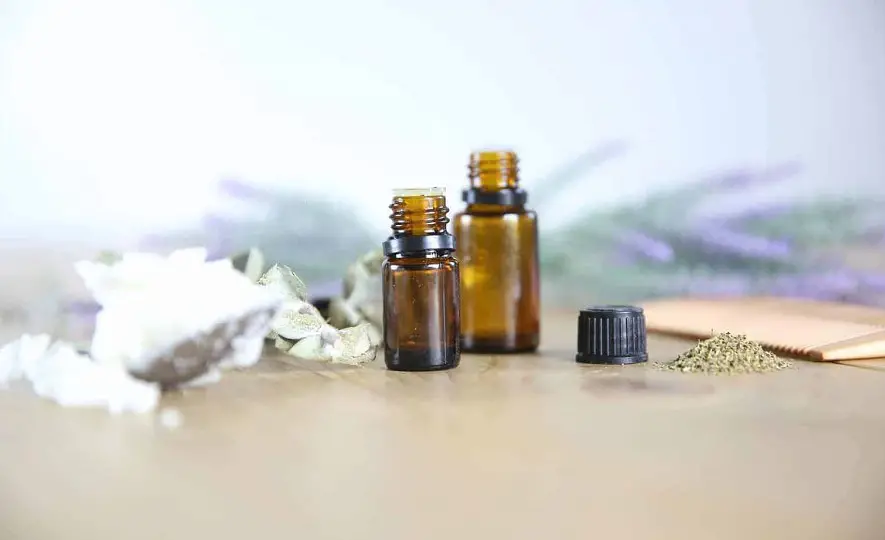
Olive oil
Olive oil is a safe and effective treatment for lice, as it helps eliminate lice and loosen the nits from the hair shafts. To use olive oil to eliminate lice, follow these steps:
Warm up the olive oil
Gently heat 1/2 cup of olive essential oil in a pan until it is warm but not hot. Be careful not to overheat the oil, as it can cause burns to the scalp.
Apply the olive oil to the hair and scalp
Using a cotton ball or your fingers, apply the warm olive essential oil to your scalp and hair. Massage it gently to ensure that it covers all the areas where lice are present.
Cover your hair with a shower cap
Cover your hair with a cap or towel to keep the olive essential oil from dripping.
Leave the olive essential oil on your hair for at least 2 hours
Leave the oil on your hair for at least an hour (two hours would be better), or overnight for best results.
Comb out the lice and nits
After 2 hours or overnight, use a fine-toot lice comb to comb out the lice and nits from your hair. Start at the scalp and work your way down to the ends of your hair.
Rinse your hair
Wash your hair thoroughly with warm water and a mild shampoo to remove the oil and any dead lice or nits.
Repeat the treatment
Repeat the treatment every 3-4 days for at least 2 weeks to ensure that all the lice and nits are eliminated.
Using olive essential oil is a safe and natural alternative to using chemical treatments for lice. However, it’s worth noting that some individuals might be allergic to olive essential oil.
It’s important to perform a patch test before using olive essential oil on your scalp and hair, and if any negative symptoms such as itching, swelling, or redness occur, discontinue use and seek advice from a healthcare professional.
Coconut oil
Coconut oil is a popular natural remedy for treating head lice due to its insecticidal and antibacterial properties. The medium-chain fatty acids in coconut essential oil can suffocate the lice and loosen the nits from the hair shafts. Here are the steps to using coconut oil for deciding head lice issues:
Melt the coconut oil
Gently warm up 1/2 cup of coconut essential oil in a pan until it is in a liquid state.

Apply the coconut oil to the scalp and hair
Using your fingers, apply the melted oil to your scalp and hair, making sure to cover all the areas where lice are present.
Cover your head with a shower cap
To prevent the oil from dripping, cover your head with a shower cap.
Leave the coconut oil on for at least 2 hours
Leave the oil on your hair for at least 2 hours, or overnight, for best results.
Comb out the lice and nits
After leaving the tea tree oil mixture in your hair for 2 hours or overnight, utilize a fine-toothed lice comb to eliminate the lice and nits by combing from the scalp down to the hair ends.
Rinse your hair
Rinse your hair with warm water and gentle shampoo to wash out the oil, dead lice, and nits.
Repeat the treatment
It may be necessary to repeat this treatment several times over several days to guarantee the complete elimination of all lice and eggs. It’s important to keep in mind that while coconut oil may work for some individuals, it may not be effective for everyone, and some individuals may have an allergic reaction.
Always conduct a patch test before using coconut essential oil on your hair and scalp, and if you experience any adverse reactions such as itching, swelling, or redness, stop using the oil and consult a healthcare professional.
Additionally, using coconut essential oil alone may not be enough to eliminate a severe lice infestation, and it’s recommended to consult a healthcare professional for further treatment options.
What to do the preventing head lice
General guidelines
Head lice are common among school-aged children, but they can happen to anyone. Taking preventive measures is the best way to avoid getting lice in the first place.
One of the most effective ways to prevent lice is to avoid head-to-head contact with others, especially in crowded areas such as schools or daycare centers.
Children should be reminded not to share personal items that come in contact with their hair, such as brushes, combs, hats, or hair accessories.
In addition to these measures, washing clothing and bedding in hot water and using a preventative spray can help reduce the risk of getting lice. There are also natural treatments, such as tea tree oil, that can be added to shampoo or used as a spray to repel lice.
If someone in your family does get lice, it is important to seek medical treatment and follow the recommended protocol for treatment. This may include the use of medicated shampoos or other treatments, as well as thorough cleaning of the home and personal items to prevent re-infestation.
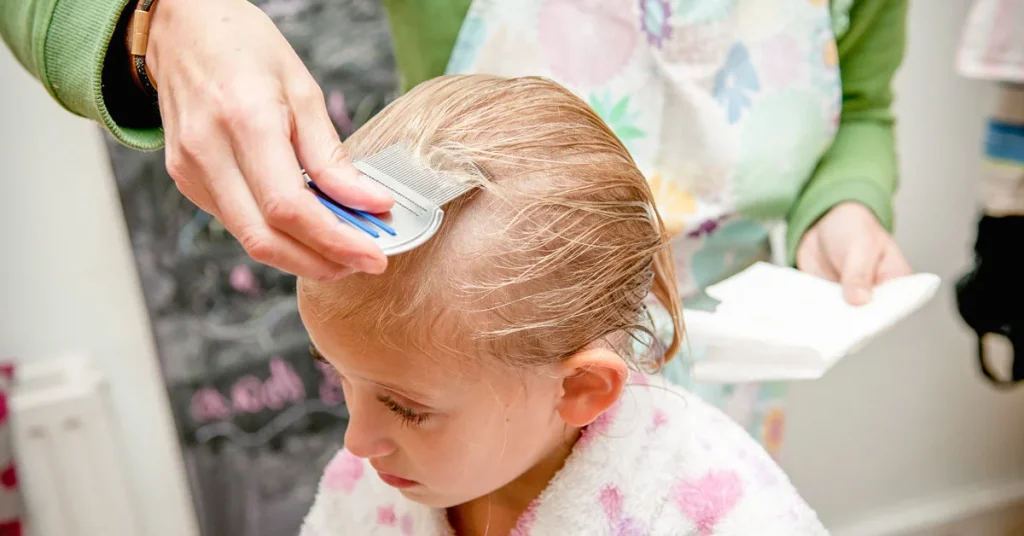
Conclusion
Tea tree oil is a natural and effective remedy for preventing and treating head lice. Whether you use a tea tree oil and lavender oil treatment, a head lice shampoo from tea tree oil and coconut oil, or tea tree oil spray, it is significant to take steps to prevent the spread of all the lice and protect your hair and scalp health.
With these tips and guidelines in mind, you can effectively treat head lice while also promoting healthy hair and scalp.
FAQ
Lice infestations can be a real nuisance and are especially common among school-aged children. Lice are tiny parasites that live on the scalp and feed on human blood.
• One way to effectively treat lice is by using tea tree oil. Tea tree oil is a natural remedy that has been used for centuries to treat a wide range of health conditions. Tea tree oil has powerful antiseptic, antibacterial, and antifungal properties, making it an ideal treatment for head lice infestations.
• To use tea tree essential oil to kill head lice, simply add a few drops of tea tree oil to your regular shampoo. However, it is important to note that tea tree oil should not be used separately as a treatment for lice. It should be used with other treatments.
• When you use tea tree oil for lice, it is essential to use the correct amount. You should add about 10-12 drops of tea tree oil per ounce of shampoo. This will ensure that the shampoo is strong enough for treating lice and their eggs without being too harsh on your scalp.
• Before using tea tree essential oil in your shampoo, it is critical to first check for lice in your hair. Lice are tiny, wingless insects that are grayish-white in color and can be found on the scalp, behind the ears, and at the nape.
• To check for lice infestation, you can use a fine-toothed comb and a magnifying glass to look for lice and their eggs.
• If you do find lice in your hair, it is important to act right away. Start by washing your hair with the tea tree oil shampoo, making sure to thoroughly massage it into your scalp. After washing, comb your hair with a fine-toothed lice comb to remove any remaining lice or eggs.
Using tea tree oil for lice is a safe and effective way to treat them naturally. However, it should be used with other lice treatments and proper hygiene practices to ensure that the infestation is eliminated. If you have any concerns or questions about using tea tree oil for lice, consult a healthcare professional.
It is crucial to exercise caution when using drops of tea tree oil for lice treatment because it can trigger skin irritation and allergic reactions in some individuals. It is, therefore, recommended that you perform a patch test before applying it to your scalp or hair.
• To conduct a patch test, blend a few drops of tea tree essential oil with a carrier oil like coconut oil or olive oil, and use the mixture on a small area of your skin. Wait for at least 24 hours to observe any adverse reactions before you apply tea tree oil to your hair.
• When incorporating tea tree essential oil into shampoo for lice prevention, it’s important to ensure that the tea tree oil is evenly dispersed throughout the shampoo. • This can be accomplished by adding the desired quantity of tea tree oil to the shampoo bottle and shaking it thoroughly before use.
• Alternatively, you can mix the tea tree oil and shampoo in a separate container before using it. Adding tea tree oil to shampoo for lice prevention can be an effective and natural way to repel lice. However, it is significant to use it with caution, perform a patch test, and not use it as a substitute for medical treatment if you already have lice.
Tea tree oil has been found to have some effectiveness in killing adult lice, but there is limited scientific evidence on its effectiveness in killing lice eggs, also known as nits.
It is important to note that even if tea tree oil is effective in killing eggs, it is not a reliable method for completely eliminating a lice infestation. Eggs of lice are difficult to kill, and they may still hatch even after treatment with tea tree oil.

I’m Amelia. I have been working with hair care product shampoo and conditioner for 6 long years. This website is an outlet of my deep passion for hair, Shampoo and Conditioner. Basically, I'm here to guide you on shampoo and conditioner.
